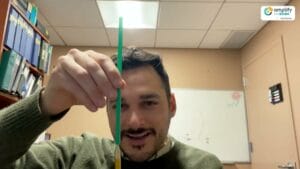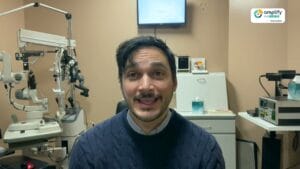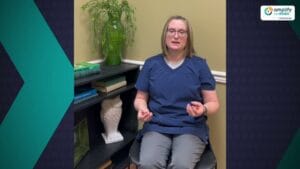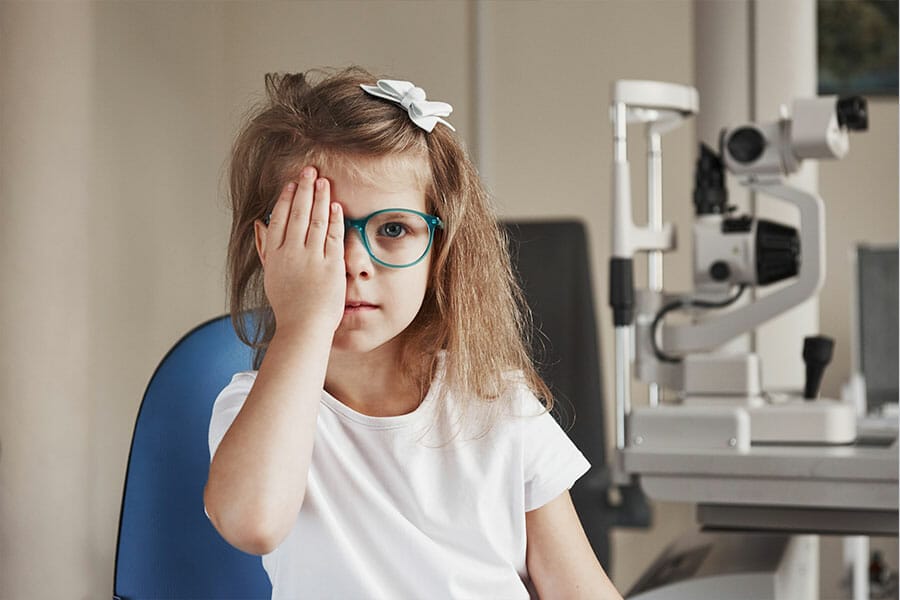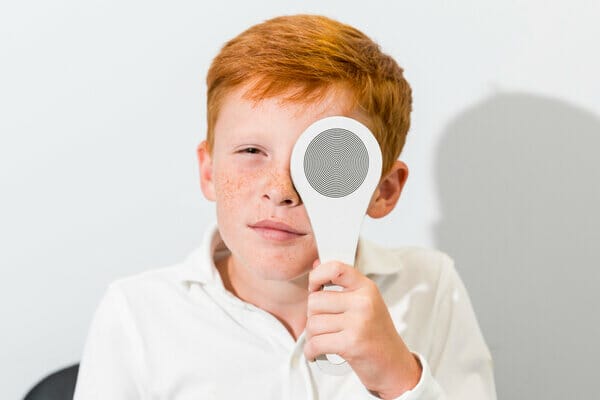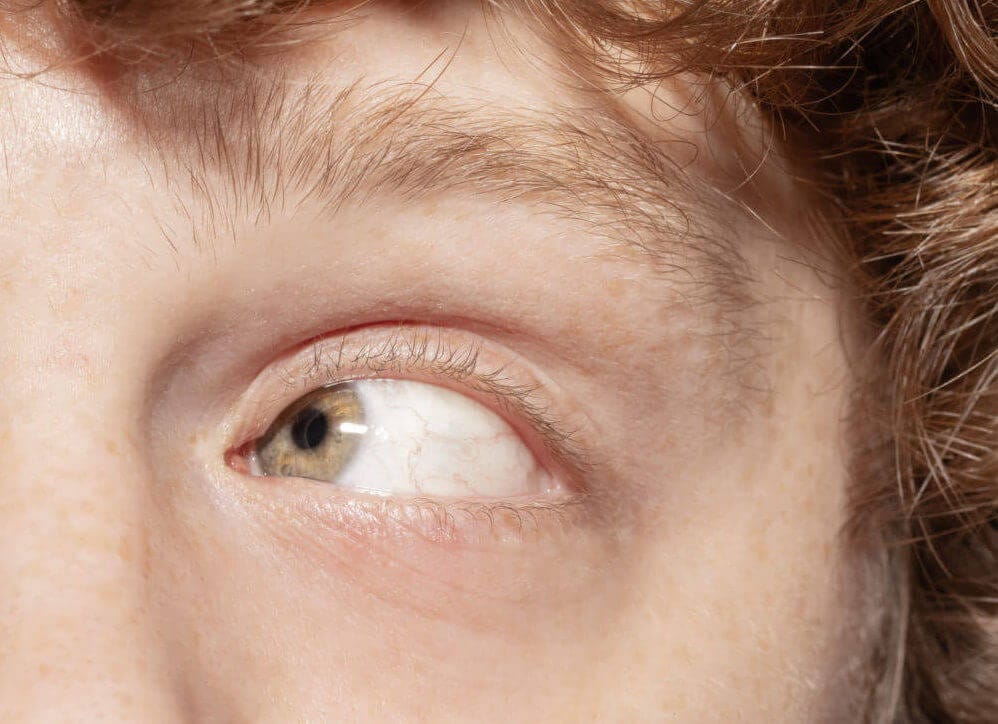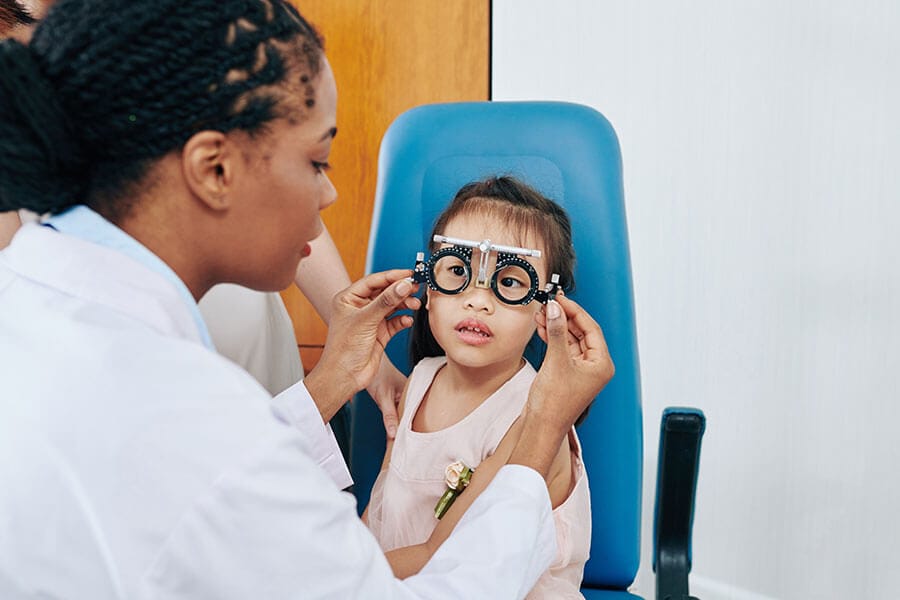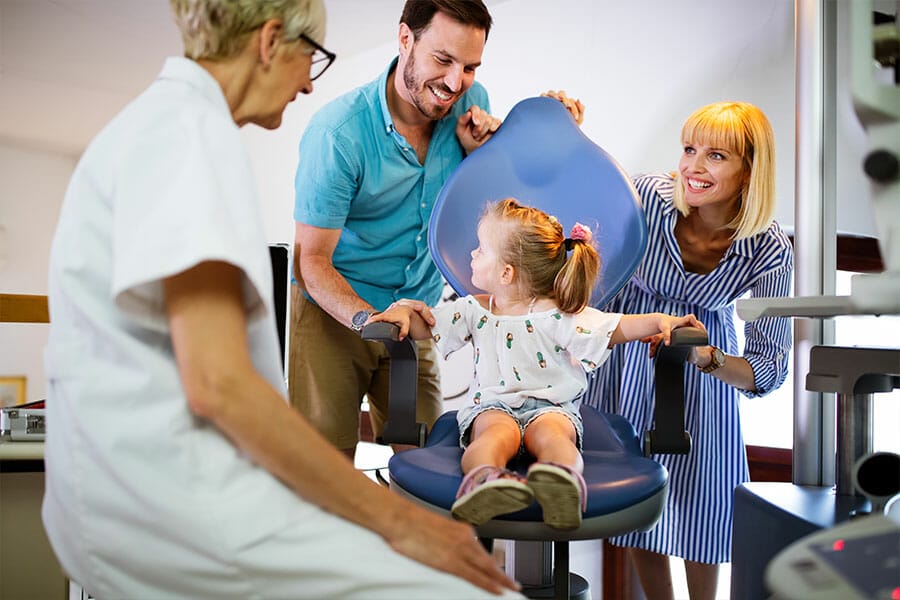The American Optometric Association recommends that babies receive an eye exam at six months old and then toddlers at age three. After that, the child should go for an eye exam at least every two years, but the optometrist will recommend how frequent the routine eye exams should be, depending on the child’s family and medical history. Furthermore it is recommended that children entering into school should have a more thorough developmental eye exam to assess for aspects of the visual system that can impact learning and reading.

